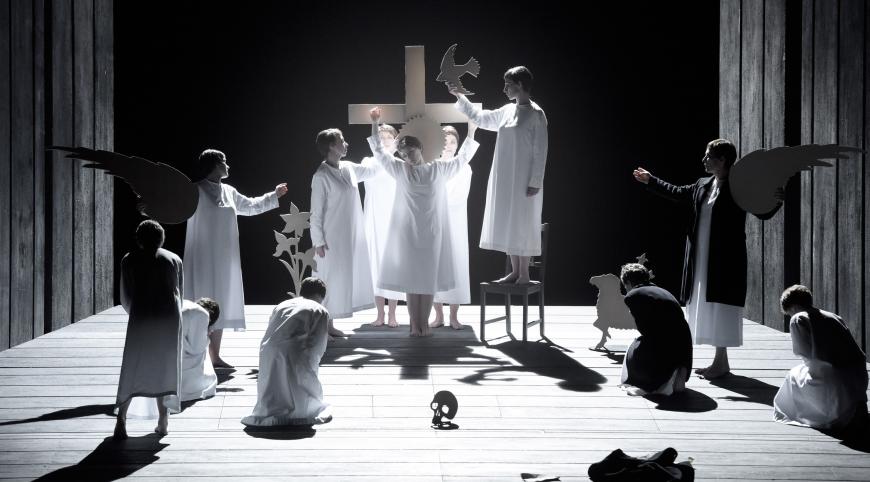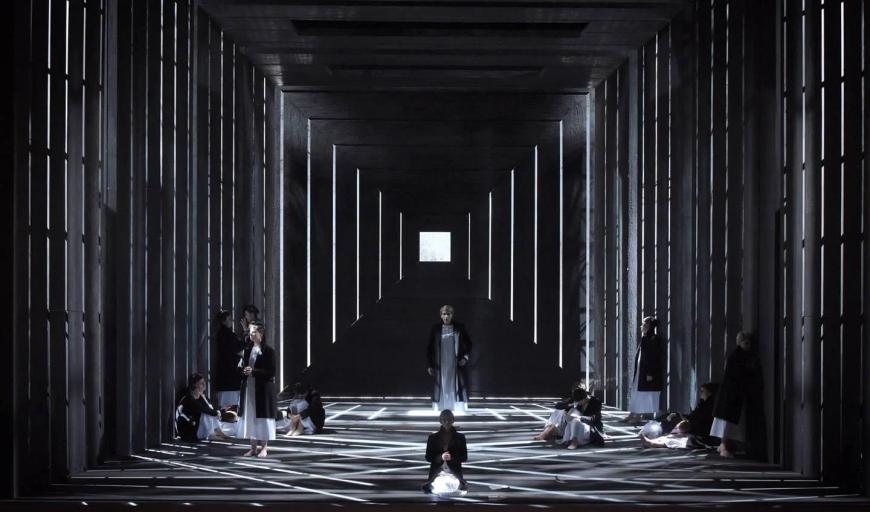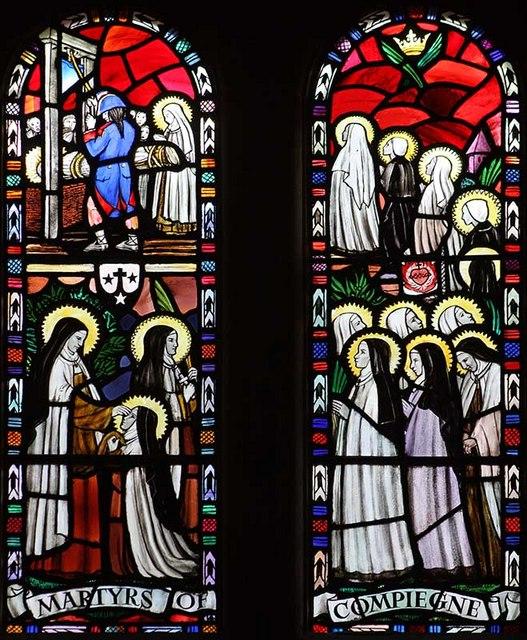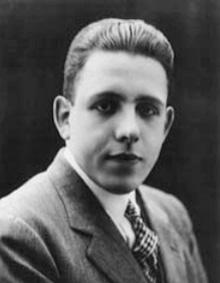
Kurt Herbert Adler, San Francisco Opera’s general manager from 1953 to 1981, brought some of Europe’s greatest operas and singers to the West Coast, at times scooping New York’s larger and richer Metropolitan Opera.
Among Adler’s American premieres are two seminal works: Richard Strauss’s The Woman Without a Shadow and Francis Poulenc’s Dialogues of the Carmelites — both being produced during SF Opera’s current centennial season.
Dialogues will have five performances, Oct. 15–30, conducted by SF Opera Music Director Eun Sun Kim in Olivier Py’s production. The cast includes a number of company and role debuts. Heidi Stober (Blanche de la Force), Melody Moore (Mother Marie), and Ben Bliss (Chevalier de la Force) are tackling new parts, while Michelle Bradley (Madame Lidoine), Michaela Schuster (Madame de Croissy), and Deanna Breiwick (Sister Constance) are also singing with SF Opera for the first time.

Of Olivier Py’s black-and-white staging, the Classicagenda review said: “[It] is a perfect balance between visual strength and refinement, dramatism and restraint, and explicit and subtle meanings. Instead of distracting us from the libretto and the music, as [often happens], here visual effects enhance their meaning by keeping viewers on the wire from beginning to end.”
The opera’s libretto is by the composer, adapted from a screenplay by Georges Bernanos that was published posthumously in French as a drama in 1949 and is variously translated as The Fearless Heart and The Carmelites.
In the work, Bernanos examines the religious themes of innocence, sacrifice, and death. Based on Gertrud von Le Fort’s 1931 novel Die Letzte am Schafott (The last one on the scaffold) and on a scenario by Raymond-Léopold Bruckberger and Philippe Agostini, it tells the story of the martyrdom of 16 Carmelite nuns from Compiègne, France, who were executed by guillotine on July 17, 1794, during the French Revolution. The German edition of Bernanos’ work has the even more apt title of Die begnadete Angst (The blessed fear).

The depth and rich complexity of the opera’s story are grounded in subjects that surpass the already deep emotions of history, mob violence, and religious/anti-religious fervor, addressing the nature of heroism and the fear and exultation of martyrdom.
The lovely, earworm music was described by New York Times music writer Bernard Holland as “floating, open textures [characteristic of Poulenc’s] lighthearted period, the same gentle mockery devoid of cynicism, the melodies colored by popular culture, and the harmonic gestures closer to Nelson Riddle than to tragic Verdi.” That is, until the finale that never fails to stun the audience.
Dialogues, Holland wrote, “weighs and compares the ways we die. In the case of the old prioress, the God of these nuns seems a cruel executioner, prolonging her deathbed agonies to horrifying lengths. The guillotine, in contrast, comes almost as a relief.”
The world premiere of the work at Milan’s Teatro alla Scala in 1957 was followed by performances in Paris, London, and — in its first production outside of Europe — the War Memorial on Sept. 20, 1957.
SF Opera’s production in the same year as the world premiere had conductor Erich Leinsdorf and a dream cast: Leontyne Price in her role debut as Madame Lidoine, the new prioress; Dorothy Kirsten as Blanche; Claramae Turner as Madame de Croissy, the old prioress; Blanche Thebom as Mother Marie; and Sylvia Stahlman as Sister Constance.
The company brought the cast and production to Los Angeles’s Shrine Auditorium on Oct. 29 that same year.
When, almost a decade later, Dialogues had its New York City Opera premiere, Harold C. Schonberg, the Times’ chief music critic, wrote: “It’s high time,” praising the work’s “tender, moving music that at times reaches real power.

“[It] is an opera on the order of Pelléas et Mélisande, with long stretches of recitative and parlando. Even some of the harmonies have the Poulenc blend of Debussy and Stravinsky. But the score is much more melodic than Pelléas, and the orchestra asserts itself much more strongly.
“If anything, Dialogues approaches continuous melody in the Wagnerian sense, though without the Wagnerian kind of symphonic development.
“A beautiful work, all told, and one that should live.”
Later in his lengthy tenure, Adler scored twice more with spectacular productions of Dialogues: in the 1963–1964 season and with the 1982 production (he cast the latter before his retirement). In 1982, Leontyne Price repeated her role as the new prioress, Régine Crespin was the old prioress, Virginia Zeani was Mother Marie, and Carol Vaness was Blanche. On opening night, Regina Resnik and Joan Sutherland — cast in other productions that season — were in the audience, along with Blanche Thebom, who lived here.




